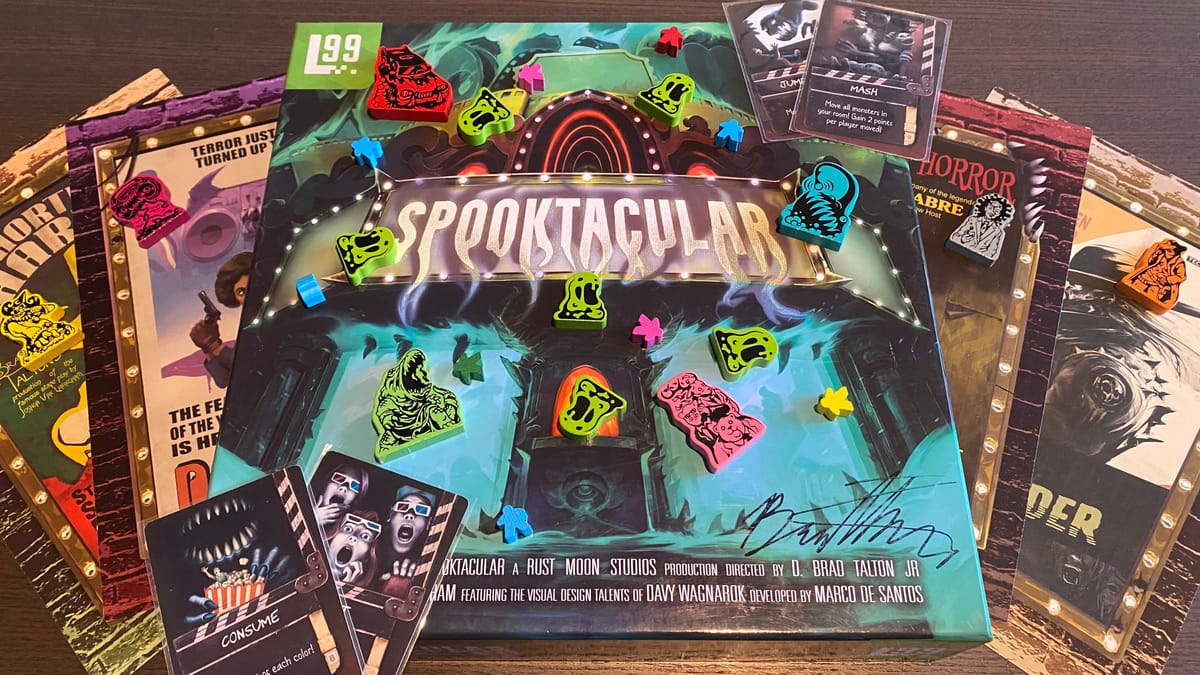
Level 99 Games’ Spooktacular, designed by D. Brad Talton Jr. and developed by Marco De Santos, is a 1-5 player game where players take on the roles of fictional movie monsters that have emerged from the screens of a theater to terrorize the unfortunately tasty guests. There are 20 different monsters to choose from that each plays the game quite differently and with varying degrees of complexity. Just to get it out of the way early, Spooktacular is my absolute favorite game from this year, and I can't stop playing it. I'm lucky enough to have a large, regular board game group every weekend, and I rarely bring the same game two weeks in a row. And yet, I've been bringing Spooktacular each and every week since my copy arrived, and I've never had trouble getting a full table of 4-5 players, and often have to promise people that I'll save them a seat at the next game. I could go on, but I'm sure you'd prefer it if I actually told you about the game instead.
Rules & Components
The rules for Spooktacular are incredibly simple, mostly explaining a few key terms and mechanics that are universal across all monsters. Each monster has simple, yet specific instructions on their board, which walk players through their turn, so learning to play is a breeze. I should know, I've taught the game some dozen or more times by now. The gameplay rules themselves only take up two pages in the rulebook, and ⅓ of the second page is just an FAQ sidebar. There’s a QR code for a video tutorial, but after explaining the different terms, the game practically teaches itself already.
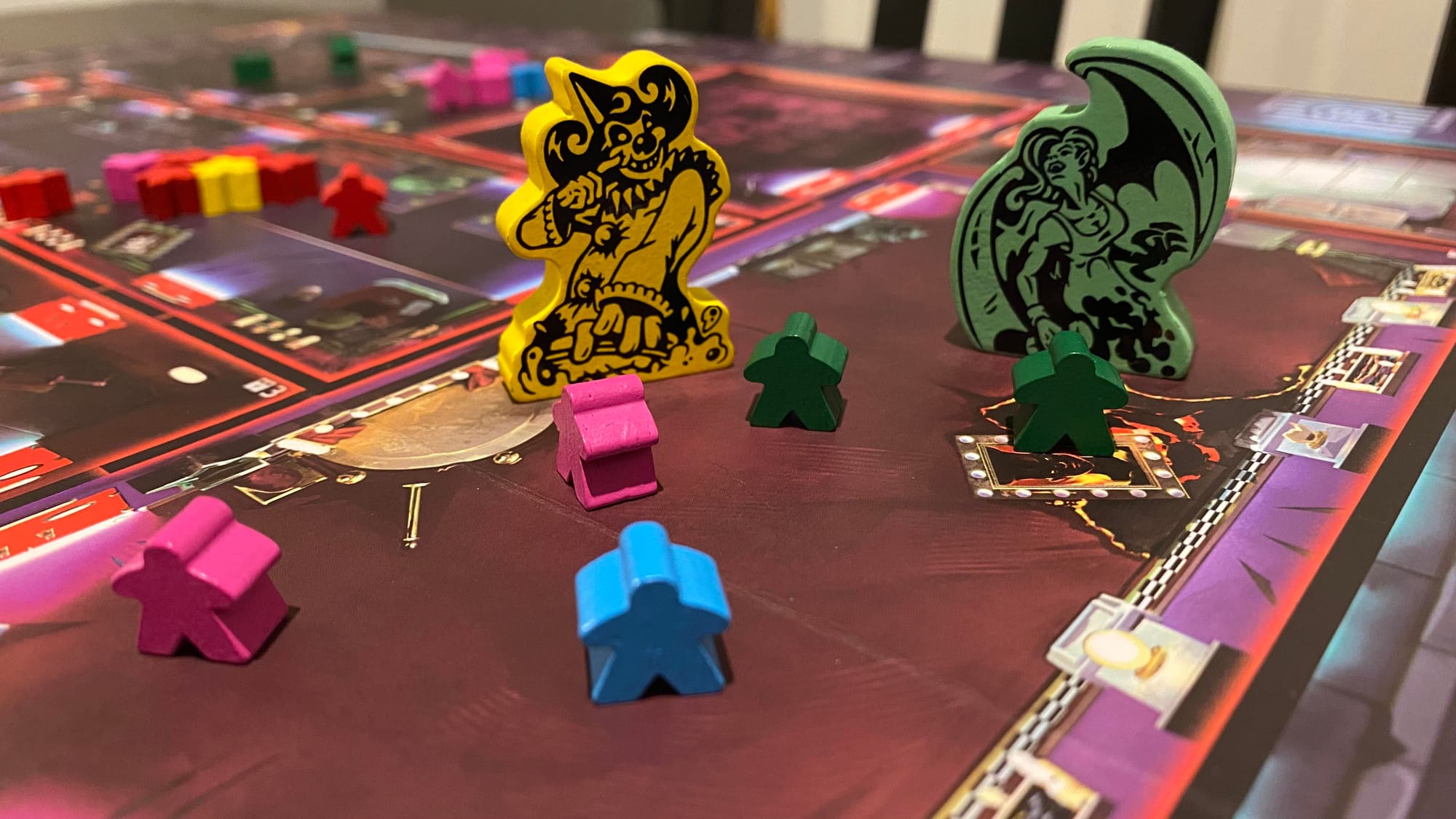
The cards and boards are nice and sturdy, as are the cardboard bits. Everything is easy to identify from across the table and will hold up to the many plays you'll put them through. The drawstring bag isn't too chintzy and won't fall apart like some I've seen—I would have liked a nice square bottom so it stays upright on its own, but that probably would've been too thick to fit neatly in the box. The numbered score markers work well enough, and I haven't had any players get confused by them, though I wish that instead of 5 police cars, they could have each been different emergency vehicles, such as a firetruck or an ambulance. Again, not necessary, but it would make it just a tad easier to tell who's who on the score track at a glance. The screen-printed monster meeples look amazing and vibrant; each is plenty different, so they clearly stand apart from each other even when the colors are slightly similar. In a world currently filled with Kickstarter exclusives and deluxe editions, it can be refreshing to see a new game presented as-is without any FOMO.
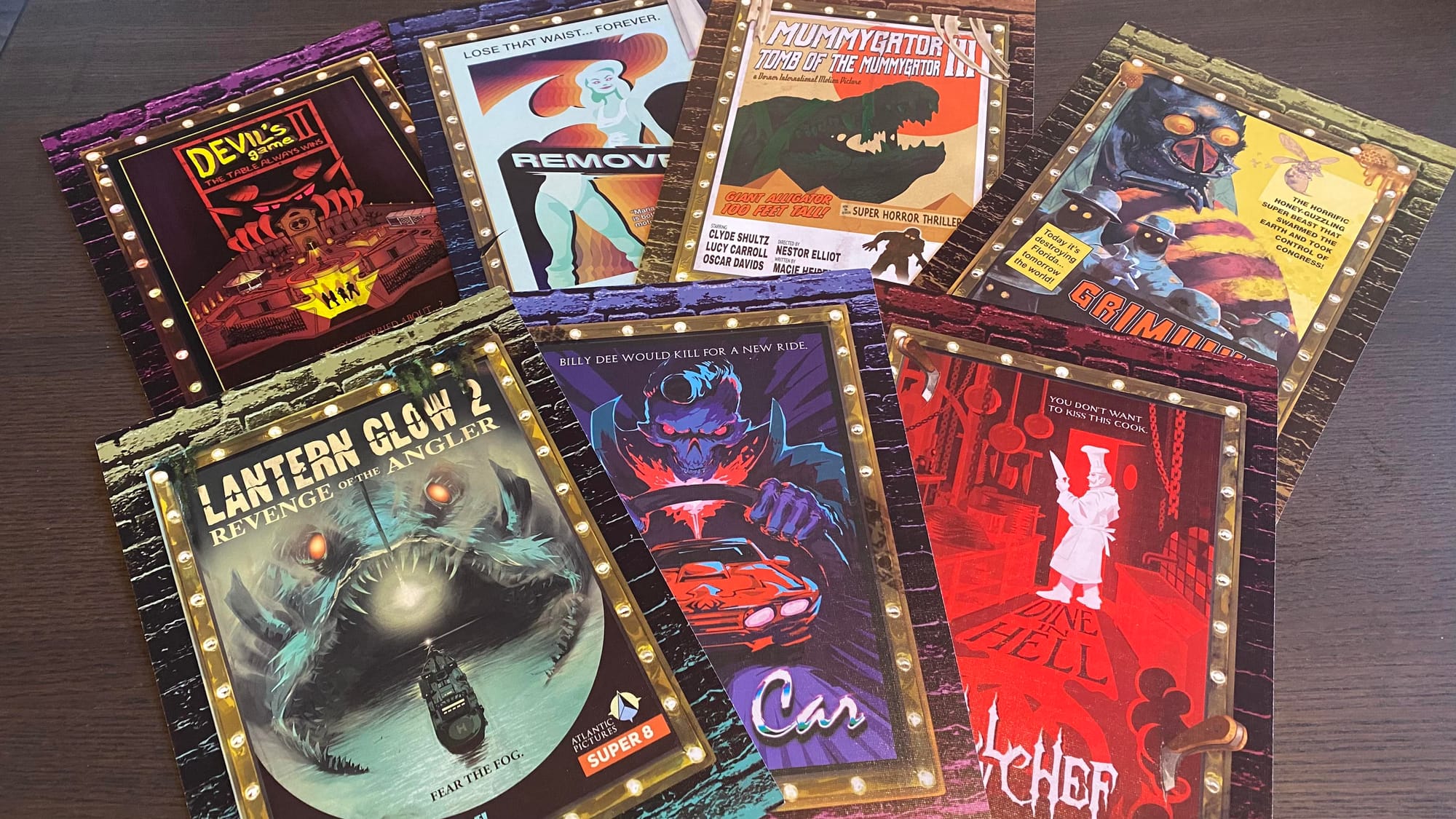
But all of these components pale in comparison to the incredible artwork from Aleksei Scheglov. Each monster's board features their fake movie's poster on the side, with a full version on the back. These posters do a fantastic job conveying the theme of each monster without needing blocks of flavor text, and I often wish I could actually watch most of these (but especially the Mummygator franchise).
Gameplay
The goal of Spooktacular, as is often the case, is to score as many points as possible before someone triggers the final round by either scoring 50 points or collecting the last ticket. On a player's turn, they'll simply run through their monster's Turn Steps exactly as written. When you're told to play a card, you play a card. When you're told to move, you move your monster (whether you like it or not; very few effects use the words "you may"). Although asymmetric, all monsters share several core features, including 5 basic cards which form most (or at least half) of their deck.
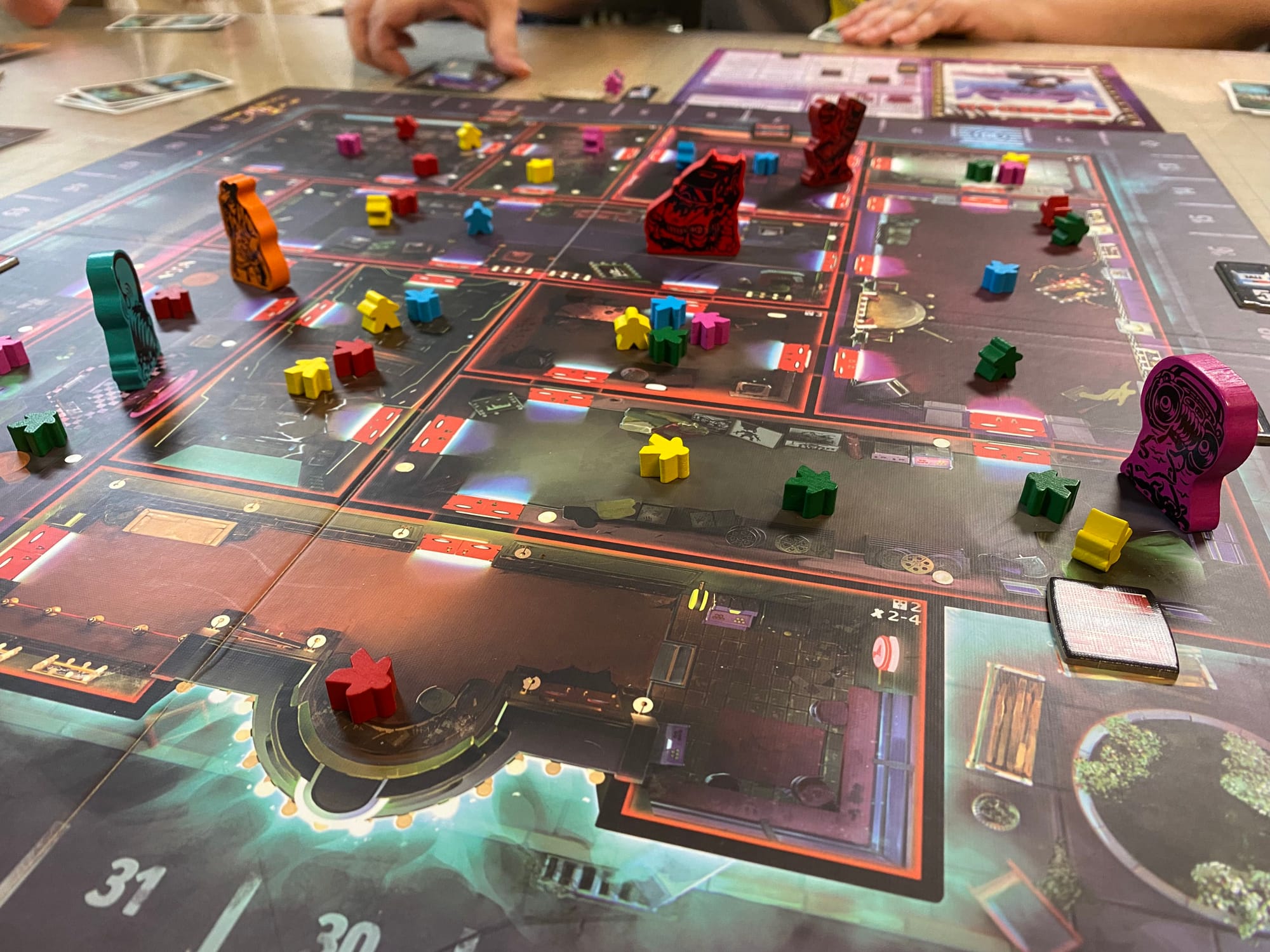
These cards form the core of gameplay, allowing players to Spook: scaring guests out of their room and gaining a point for each victim, and Devour: eating guests and adding them to the monster's collection. When a monster has at least one of each of the five different-colored guests, they return those guests to the bag and score a ticket before repopulating the theater. These tickets are kept hidden even from their owner, and can be worth anywhere from 4 to 8 points, so players can't get too comfortable even with a decent lead on the score track. Typically, the last things a monster does on its turn are move to a new room and draw cards until they have 3 in hand. Because movement happens after the rest of their actions, and before they know all their options for the next turn, players need to be careful in how they set up for future turns in order to maximize their points.
That's just what every monster can do: play a card, move, refill their hand, try to Spook and Devour. But that's just the foundation upon which each of the 20 monsters builds off of and messes with. The Outlander, a shapeshifting alien cowboy, adds devoured guests to his Posse to build up a chain of bonus actions each round. Devil's Game, a haunted pinball machine, launches guests into other rooms and causes chain reactions that result in devouring or stealing points from across the theater. And these are just some of the low-complexity Easy monsters. Intermediate monsters start adding things that every player needs to be aware of, like the Angler's doors leading outside the theater, where she automatically eats guests Spooked out of them, or Grimhive's hives, which constantly score points unless a single player conquers the room. Even beyond these, the Advanced monsters make some radical changes to the game. The Beasts of Business turn the score track itself into a stock-themed game of snakes and ladders, which they get to manipulate. I've only touched on the surface of these five monsters’ mechanics, and there are 15 more available. I've long thought that what makes Level 99's games so special is how they achieve replayability through sheer volume of content, and Spooktacular is no exception.
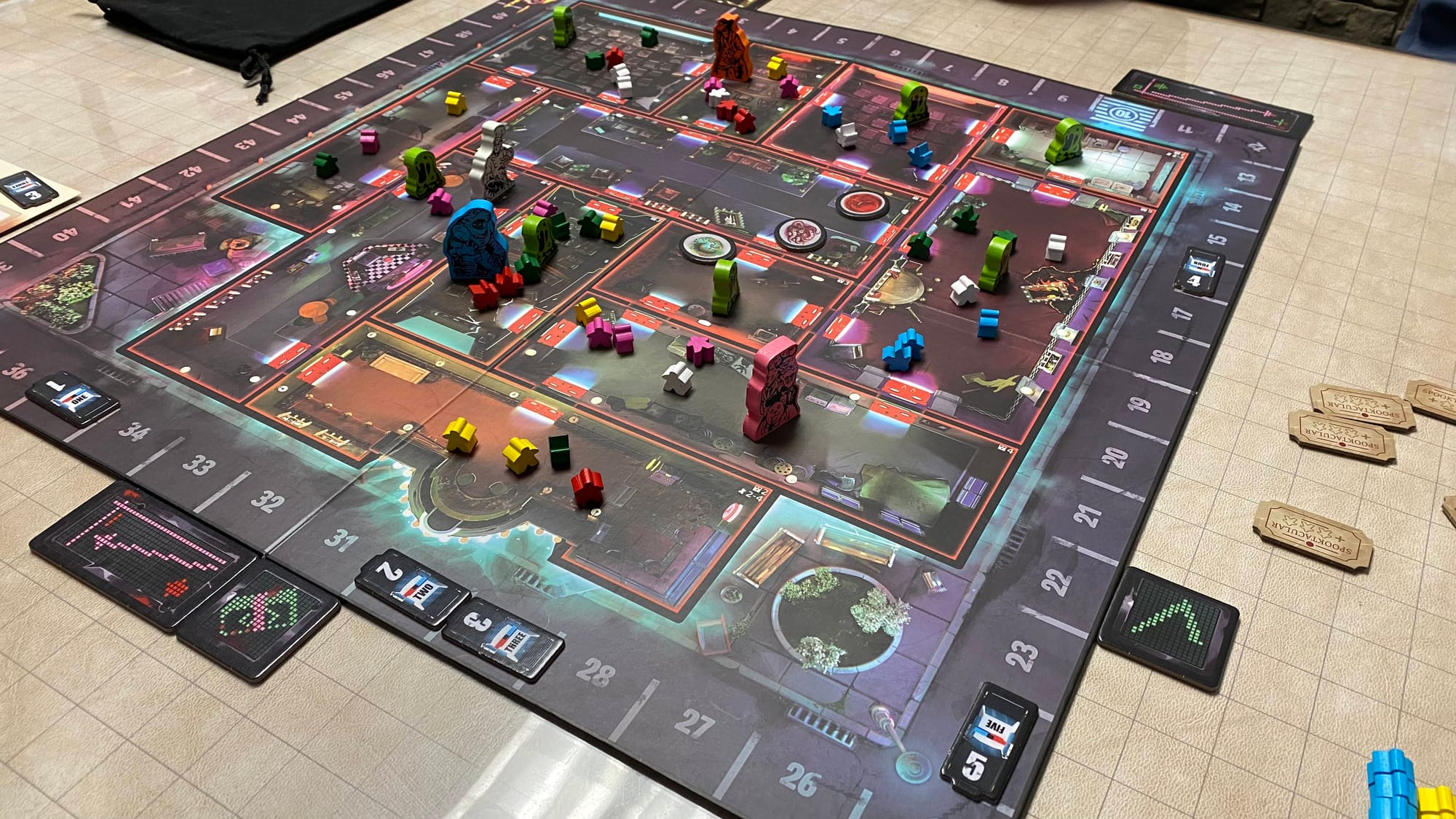
But volume of content isn't the only thing that makes Level 99 Games' products what they are. Despite the vast differences between all these monsters, the game still plays smoothly, no matter who's haunting the theater or how many monsters are present. The core gameplay is both very solid and quite flexible, which allows them to create such a diverse cast without infringing on the game's balance. With that being said, however, players do need to think about which monster they want to play as and not grab one randomly. The Intermediate and Advanced levels are indicated as such for a reason; players need to have a solid grasp on the core game, or they'll likely have a bad time running an Intermediate monster, and I would never allow someone to play an Advanced monster if there are any new players at the table due to how much they can mess with that core gameplay. Monsters also need to be policed by the other monsters. If left unchecked, The Remover can score an obscene amount of points, but her predictability can be exploited as long as the other players pay attention.
Solo
One of the monsters, Killtron 3000, plays their turns by preprogramming the cards they’re going to play and gets a lot more mileage out of their cards than most other monsters. The programming mechanic made them the perfect candidate to turn into a solo-AI monster: Killbot 3000. Killtron can even be included in any game below the max player count, since Spooktacular is at its best when there are more monsters on the board. But in a game all about checking the board state and optimizing your points each turn, how can you create an AI monster that doesn’t drastically increase the overhead just to run it (which kills any attempt at a solo game for me)?
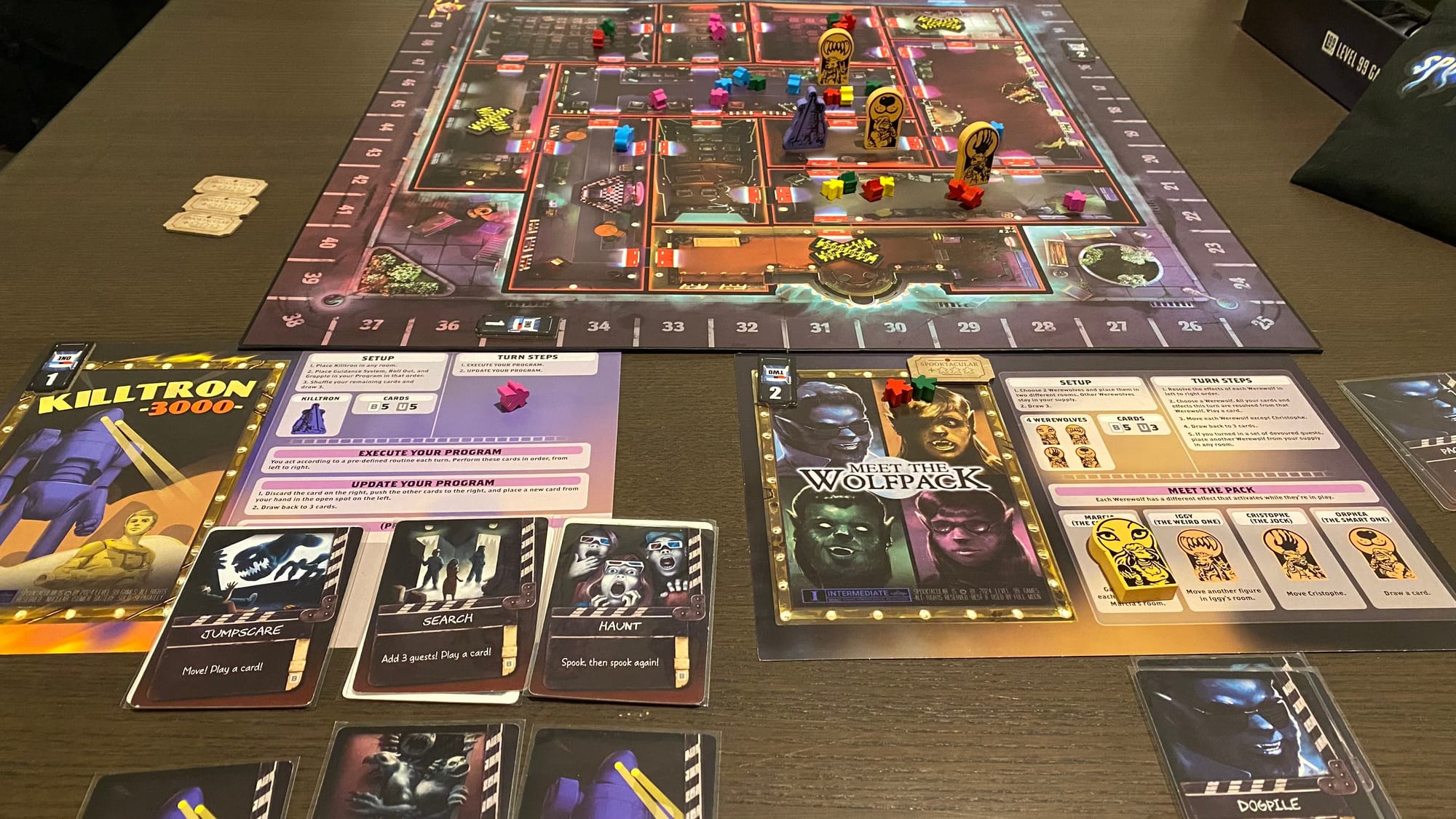
Surprisingly easily, actually. To make up for Killtron’s obvious weakness of predictability, the monster has access to some strong cards for more mobility and extra Spook-ing. Killbot takes this a step further by creating an optimal deck for each of its three programmed card slots, flipping over the top card each turn. Thus, each turn, it will either move or move an opponent, then Spook or Devour to score points, with some extra stuff in between. There are some notes about preferences and priority for choosing rooms to move into or when to move players, but it boils down to Killbot doing whatever is best for Killbot and worst (on the surface level) for other monsters at any given moment. The result is a simple yet deadly AI that can give players a decent challenge without needing a bunch of handicaps nor requiring players to essentially play two-handed.
Spooktacular
Phenomenal
I absolutely love this game. Not only does it have plenty of strategic depth and character variety, Spooktacular is incredibly accessible and can be played in just 45 minutes with a lightning-fast teach. It’s no surprise that the game sold out on the very first day of Gen Con, but keep your eyes peeled as it should be back in stock soon.
Pros
- High replayability
- Diverse cast of 20 monsters
- Simple mechanics without sacrificing depth
- Snappy gameplay that hits the sweet spot for playtime
- Simple AI player that doesn’t need to “cheat”
Cons
- Player score markers could be differentiated more
- Some monsters are prone to a bit more analysis paralysis and longer turns (Devil’s Game, Beasts of Business)
This review is based on a retail copy provided by the publisher.
